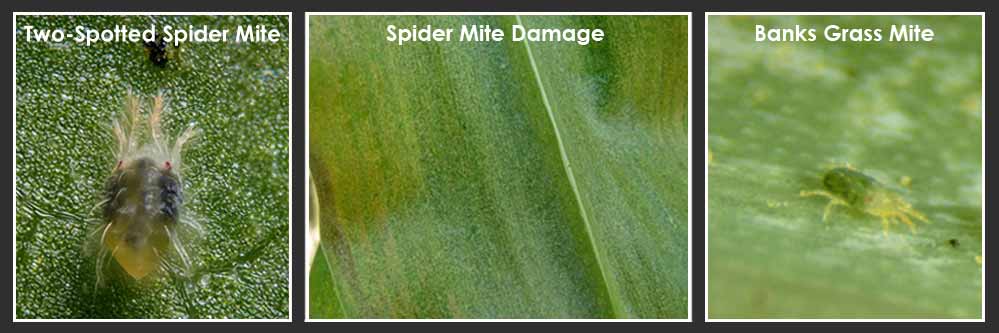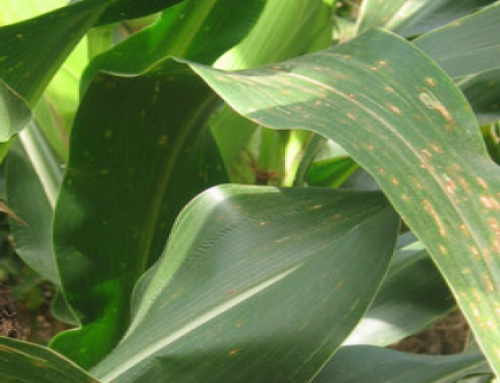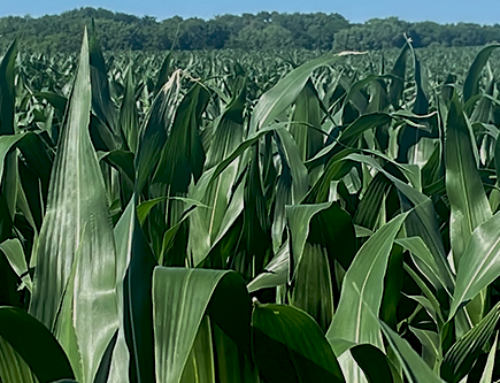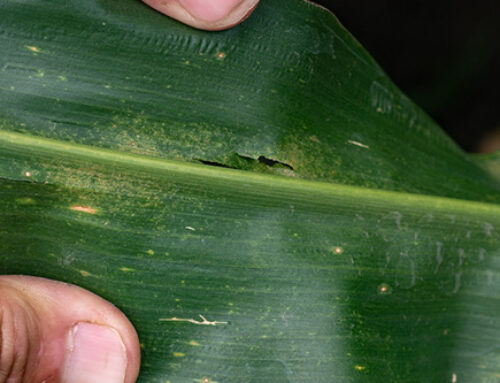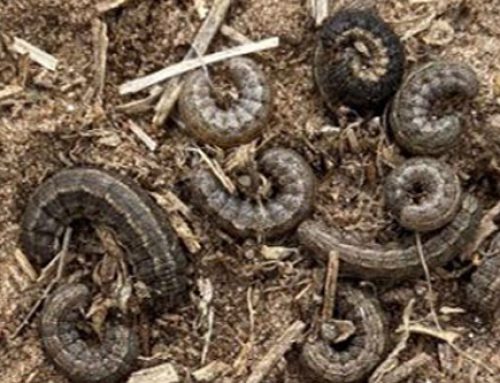Spider mites can be a major pest across the Crop Quest trade area. Although we worry about spider mite management mostly in corn, they can be very damaging in sorghum, wheat and soybeans as well. This is a tough pest to kill. In fact, when it comes to spider mites, the objective is not necessarily to kill, but to manage. There are very few miticides even available for use, and none are necessarily consistent killers of mites.
We deal with two main species – the Banks Grass Mite, and the Two-Spotted Spider Mite. Both species can cause significant damage, but they can act very different out in the field. Generally Banks Grass Mites will begin to colonize the lower leaves of the plant first, and then move up the plant over time. Colonies will generally be on the lower surface of the leaf. Two-Spotted Spider Mites can and will begin colonizing a plant anywhere and anytime. It is not uncommon to see mite colonies start near the top of the plant, and move in all directions. Two-Spotted Mites tend to spread more rapidly due to this nature. And, we have found that Two-Spotted Mites can be more difficult to control than Banks Grass Mites.
Spider mite management is more cultural than any. Plant health, available soil moisture, previous insecticide treatments, mite predators, stage of growth, prevailing winds and side of field can all affect mite activity and damage levels. Plants under stress are more prone to attract spider mites, and damage is more pronounced in these situations. So anytime you can create an environment where plants are well taken care of, spider mite management is usually easier. Miticides may still be necessary, but the probability of controlling mites is much better under ideal growing conditions.
One of the major players in mite control is the presence of beneficial predators. It is always worth the effort to keep these predators around. If insecticides have to be used to control other pests, it is likely that mite predators will also be disturbed or killed with those treatments. If that occurs, it is tough to stop mite populations from exploding. Miticides can help slow the progress of these population explosions, but we rely on mite predators to help keep populations in check over an extended period of time.
Sometimes having a modest level of mite activity early in the growing season can actually be a benefit. IF predators are present early in the season, a low level of mites can actually cause spider mite predators to increase due to an available food source. This predator population may be sustainable for the entire season, and can help delay mite treatments, or more than likely enhance the efficacy of a mite treatment.
So, when you deal with spider mites, take a management approach, not necessarily a control approach. Manage the field for plant health – avoid stress when possible, choose insecticides that minimize the effect on predators, and treat mites prior to serious population explosions. Don’t rely on miticides to do the job alone, and definitely don’t rely on miticides to kill the vast majority of the population in the field. I assure you, if you get what may be considered 100% control, you are getting help from these other cultural practices. Our Crop Quest Agronomists have vast experience with spider mite management. We encourage you to utilize our knowledge to help you manage mite populations in your fields.
Written by: Dwight Koops, Dodge City, KS
Original Two-Spotted Spider Mite Photo by: Gilles San Martin from Namur, Belgium, Wikimedia Commons
Original Banks Grass Mite Photo by: Frank Peairs, Colorado State University, Bugwood.org
